Enjoy the Music.com
Coincident Dynamo SE34 MK III Vacuum Tube Int. Amp.
A tube amplifier that is true to the master tape with soul.
Review By Tom Lyle
www.enjoythemusic.com

Back in March 2016, Enjoy The Music's Rick Becker reviewed the previous incarnation of this vacuum tube stereo amplifier, the Dynamo SE34 MK II. It was bestowed Enjoy the Music.com's 2016 Blue Note Award, and so, I suppose the best thing I could do would be to read Rick's review, and simply tack on an addendum, adding my thoughts on the differences between the two. Even though Rick Becker is an excellent high-end equipment reviewer, without listening to the older Dynamo 34SE MK II, I would feel more than a bit uneasy making any assumptions about how the MK II would sound in my system and listening room as compared to the MK III. Of course, I trust Rick's description of the older model, but I think I'll wait until I finish writing my review before reading his review.
The President of Coincident Speaker Technology, Israel Blume, says that the older Dynamo MK II's success was "overwhelming". He took this amplifier and made significant upgrades to it, including but not limited to improvements to increase its reliability, but more importantly, eliminate any noise, hum, and susceptibility to the AC line.
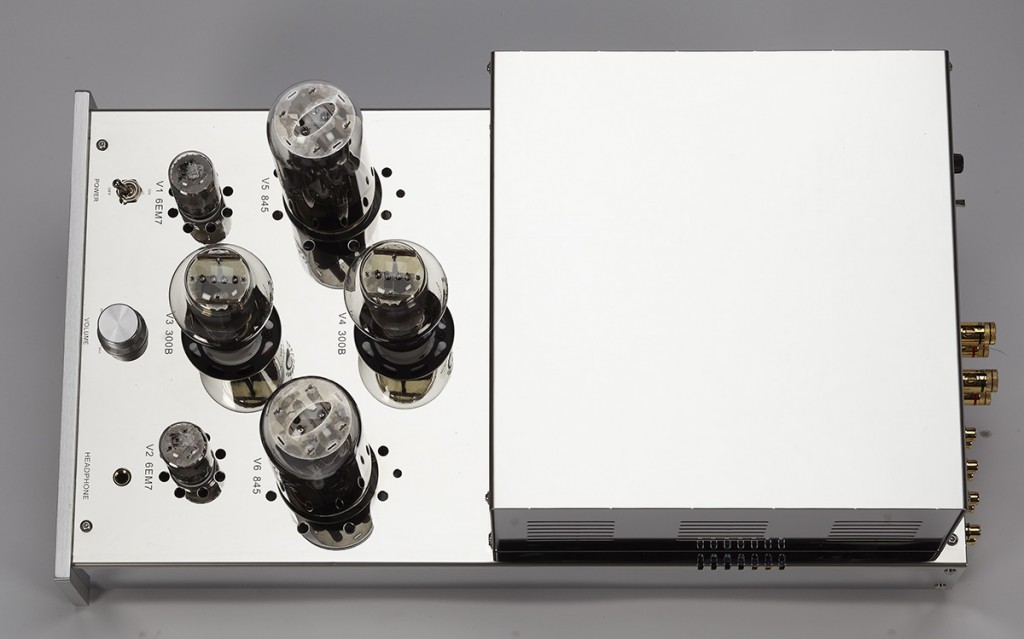
Wired
The Coincident Dynamo SE34 MK III is a low-powered, vacuum tube integrated amplifier that uses two EL34 pentode tubes wired in a triode configuration that runs in Class A. Its output power is 8 Watts per channel, it has inputs for two sources, and has a headphone input on its front panel. The only controls on the amplifier are a volume knob and a toggle to switch between the two inputs. The Dynamo SE34 MK III has no remote.
With that said, this is an integrated amplifier that some will be very interested in, and some will not be able to even consider for many reasons, mostly because its low power will not be able to drive their speakers. However, even if one has never considered a low-powered amplifier for use in their system, one might be surprised at how little power one needs to drive the average speaker system. Smaller speakers, such as many two-way stand-mounted monitors, and even some larger floorstanding speakers might be able to use a low-powered amp, as long as the speaker's impedance rating is not too challenging.
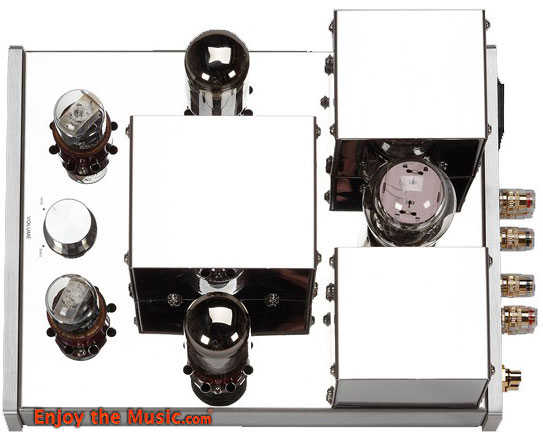
Many
The improvements made to the Dynamo SE34 MK III integrated amplifier are many, so there are plenty of reasons to upgrade from the MK II version to the MK III of this amplifier. The Dynamo SE34 MK II was, according to Israel Blume, "an overwhelming success". Given that Rick Becker purchased his review sample should give weight to this statement. The most notable upgrade to the new model is that it now features two inputs that are selectable via a toggle switch on the silver, mirror-like finished of its front panel. And so, even though its preamplifier is passive, the Coincident Dynamo SE34 MK III is one that I truly consider an integrated amplifier.
The Dynamo MK III's power supply's transformer is 50% larger than its younger sibling, with better insulation and winding techniques, which Mr. Blume says "results in noiseless operation and a 40% reduction in generated heat levels". Its larger power supply is now isolated for its input circuitry. This improvement has the potential of eliminating EMI (electromagnetic interference).
The Dynamo MK III also has a 70% increase in the amount of filtering and energy storage available, which has the potential of producing deeper and tighter bass and will be able to match with a greater range of speakers with less effort. Its distortion levels have been reduced, especially in its low frequencies when playing the amplifier at high volume.
The new chassis of this integrated amplifier is 20% larger than its predecessor. It had to be made larger because of its new, larger power transformer, but the chassis also has been made more rigid, lowering the amount of unwanted resonance. The Dynamo MK III weighs eight pounds more than the older unit. Every capacitor in the Dynamo MK III has twice the amount of voltage capacity, and its tube rectifier has been upgraded from a 5U4GB to a soft start 5AR4. These, plus all the other improvements made to the very successful older component are significant. With all these improvements and features, many will be very surprised that the Coincident Dynamo SE34 MK III sells for an affordable price of $1799.
House
I used the gorgeous looking Coincident Dynamo SE34 MK III integrated amplifier in my second system located in a common area of our house. When I began to set up this system way back when, I used this system to test less expensive equipment, rather than in my larger system in my dedicated, acoustically treated dedicated listening room. Over time, the equipment in this system became better and better and now is made of equipment that is more in the "mid-priced" category.
The specifications of the EgglestonWorks Isabel Signature speakers I used for this review have only an average rated efficiency of 87dB/W/m. What makes these speakers appropriate for use with this low-powered amplifier is their very stable 8-ohm impedance rating. They are two-way floor standing speakers that I've used for both higher power tube and solid-state amplifiers and low-powered tube amps. The speakers played well with the Dynamo MK III and seemed to bring out the best in not only the amplifier but the music I played.
The analog front-end of this system I used to audition the Coincident Dynamo SE34 MK III consisted of the Pro-Ject X2 turntable and was fitted with an Ortofon Windfeld Ti phono cartridge. The phono preamplifier was a Chord Huei, which I reviewed earlier this year. The digital front-end used an Oppo CDP-83 Special Edition universal disc player and a Logitech Squeezebox Touch music streamer, both connected to either a Benchmark DAC3 HGS, but more often an Audio Analogue AADAC digital-to-analog converter that I also reviewed recently. Besides sounding excellent, the AADAC had the convenience of a remote-controlled volume, and also a very modern Bluetooth receiver, which was an excellent way to listen to music off-axis.
Connected
Setting up the Dynamo MK III was super-simple (as you probably have noticed, I will often call the Coincident Dynamo SE34 MK III stereo integrated amplifier the Dynamo MK III). I connected the DAC's analog output to the integrated amp's input labeled "Digital" and the analog output of the phono preamp to the amp's "Aux" input. When listening to digital, I frequently left the volume control on the Dynamo MK III on full and used the DAC's volume control, or sometimes would use the volume on my iPhone or tablet when I was listening to Tidal or other streaming services.

Selection
From the first selection to the last, I was very impressed with this component. Regardless of what type of music I played through the Dynamo, even though this was a true Class A tube amplifier, it wasn't tough to tell that this amp had a frequency response that was only limited by what was on the recording or my speakers, not by this amplifier. No, I wasn't listening to speakers that had unlimited low-frequency response, but I had never, not with any other amplifier that I've ever used in this system, low-frequencies that sounded this deep coming from these speakers. As a rule, I use a subwoofer when using these speakers, but did not need to connect it during the time the Dynamo MK III was here.
The bass coming from my speakers did not sound like it had an unnaturally pumped up mid-bass. I did not bother measuring the bass response, that's not something I would ever do, but if the mid-bass was inflated, it did not sound like it was. It sounded like music. It sounded like a relatively powerful, pitch specific, deep bass coming from the instruments that had low-frequency energy in this frequency region. Given that this amp is set up as a single-end, triode, Class-A amp, one would expect its midrange to be excellent sounding, and they'd be correct. It was as if I was not hearing a great stereo system, again, I was hearing music!
I was about a month into the review period, reveling in the sound of the Dynamo MK III, playing album after album of what I consider great music, including when I cranked the volume up on the Classic Records 200-gram "Quiex" pressing of Led Zeppelin III. This album alternates between hard-rock tracks and those that mostly use acoustic instruments. The Dynamo MK III was able to handle every note that was encoded into the grooves of this LP or into the digits of the high-resolution files I also spent some time playing. Side one of this album is dominated by the epitome of the era's hard-rock, on tracks such as "Immigrant Song", "Out On The Tiles", and especially "Since I've Been Loving You", a version of blues-rock that Led Zeppelin perfected during this era of their career.
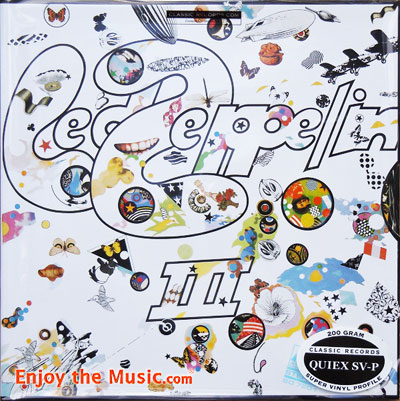
I had a chance to speak to Coincident Speaker Technology's Israel Blume soon after listening to this Led Zep album. I was blown away by how it was able to handle this album so well, and especially my decision to turn up the volume to what I consider "realistically loud" when listening to it. Mr. Blume told me that the reason why I was enjoying the Dynamo MK III so much was that this 8-watt single-ended-triode amplifier had no problem driving the 87 dB sensitive EgglestonWorks Isabel Signature speakers to these high SPLs without distortion and compression. This was because of the massive size of the Dynamo MK III's power supply transformer and oversized power filter capacitors.
In my system, I've used amplifiers with more power than this integrated amplifier, but because of these oversized power filter capacitors, it has a greater amount of energy storage, which makes it have more headroom or power reserves that are available to power a given speaker. The Dynamo MK III's higher rating will be more resilient in avoiding clipping distortion and will have the ability to provide greater headroom (the difference between the signal peak levels and the amplifier's clipping level). Peak power depends on the amplifier's power supply, in other words, its energy story. If the amplifier's power supply has a bank of large filter capacitors, it can store energy that can be released during short peaks and avoid clipping or distortion.
It helped that the sound quality of the Classic Records' pressing of this album allowed me to hear much more of these elements than a "normal" pressing, at least as much, or more than when listening to the high-resolution digital file. There was a near-perfect separation of the instruments and voices that I wasn't expecting, and a dynamic distance placed between them that added to the sense of realism when playing this album. Even though it is well-known that there was some manual panning of the drum kit's toms, giving some listeners the impression that the toms were placed wider than they were when recorded when Bonham was traveling from one end of the drum set to the other.
But that's not what I mean by the Dynamo MK III separating the sound of the drums via their dynamic distance. The dynamic distance was exhibited when different drums and cymbals were played at nearly the same volume and were located in the same location in the soundstage, but there was still a natural amount of separation between each of these sound, and in addition to that, the amount of force that was applied during each drum and cymbal hit was more noticeable than I was accustomed to hearing. This dynamic distance is one of the characteristics that come with powering a high-end amplifier with tubes. And the Dynamo MK III displayed this trait magnificently.
Not only did the drums sound mega-realistic when played through the Dynamo MK III, but all the instruments and vocals on this track sounded wonderfully realistic, too! Spinning "Since I've Been Loving You" is a powerful track regardless of the equipment used to play it. But when heard through a high-end audio system in can be transcendent. But I would have never thought that it could sound this good using only 8-Watts of power through two-way speakers and without a subwoofer. Wow.
As mentioned above, in the system that I performed an audition of the Coincident Dynamo SE34 MK III stereo integrated amplifier displayed the traits of not only a good low-powered amplifier, but the traits of a good amplifier, period. Of course, I'm lucky that I had a pair of speakers that were able to take advantage of the Dynamo MK III's positive traits. This hand-wired amplifier, with its huge capacity power supply, oversized output transformer that uses high-purity medical grade copper windings, polypropylene coupling capacitors, and 50% over-rated all electrolytic capacitors, and has an auto-bias circuit all contribute to a sound that I considered jaw-dropping.
Proto
When most people hear Iggy Pop's name mentioned, they usually think about his time fronting the proto-punk band The Stooges in the late 1960s to the early 1970s. Or perhaps they might think of a more modern appearance on video, where he would flaunt his very muscular middle-aged physique. Lately, I've been playing many of the solo albums that he recorded in the late 1970s to the mid-1980s. He produced many good albums during this period, in particular, the 1979 album he released on Arista Records, New Values.
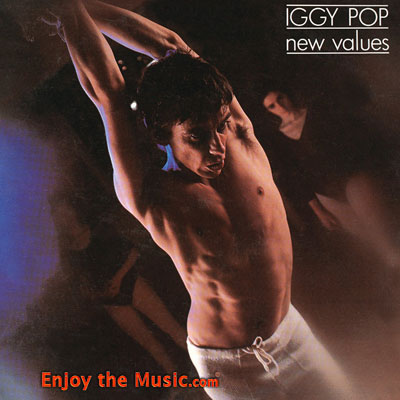
I have choices when playing this album, either CD, the file ripped from this CD that resides on my hard-drive that I can access through my home network, my original LP pressed by Arista that I purchased long ago, or my latest vinyl acquisition of this album on the Music On Vinyl reissue label, which was likely remastered from a high-resolution digital file. Either one of these sounded great through the Dynamo MK III, but the only that sounded the best was this new vinyl reissue.
Regardless of which format I played, what I heard when playing this album, especially when listening to my two favorite tracks, "I'm Bored", and "Five Foot One", featured, among a host of other positive characteristics a relatively clean, tight electric bass guitar sound thanks to none other than Jackie Clark, who some might remember from appearances on many Ike & Tina Turner records from earlier in the decade.
I'm also happy to report that I was getting accustomed to hearing a very transparent midrange from this amplifier, which not only brought out Iggy's vocals into my listening room but highlighted the very decent recording done at the Paramount Recording Studios complex in Hollywood. Once again, I heard crystalline, impressively extended highs, most of them coming from the cymbals of German drummer Klaus Krüger, who had just finished working with the genre antithetical Tangerine Dream, and a few years after recording with Iggy Pop stepped out even further into the ether with an album of experimental electronic music.
During the writing of this review, it was just about when I was listening to the Iggy Pop album when I felt as in my listening notes if I wasn't being 100% truthful about this amplifier's sound. Even though I praised this amplifier in many areas, and even praised it not as a tube amplifier, but a great amplifier regardless of how it was powered. When listening to the Iggy Pop album it made me feel as if I should admit that this amplifier sounded nothing like the more squeaky-clean sounding solid-state muscle amplifier that I've been listening to with this system of late.
But this might have been that I had become so accustomed to its "honest" sound, one that made it seem as if I was hearing exactly what everyone involved in making the Iggy Pop recording meant it to sound like. In addition to accurately reproducing the sounds that it is fed from the front-end of my system, the Dynamo MK III amplifier took what it "heard" from Iggy's full band, which besides bassist Jackie Clark and drummer Klaus Krüger, had on guitar Iggy Pop's old bandmate from The Stooges James Williamson, and also on guitar and keyboards Scott Thurston, who was also in The Stooges, but nearer to the end of their career.
This amplifier was able to present this album as one that seemed as true to the master tape as technologically possible, at the same time exhibited that it has a soul, reproducing the music on the album as an organic whole. This very important characteristic didn't jump out at me until I listened to a portion of New Values once more, this time connecting the 150-watt-per-channel solid-state Audio Analogue Maestro Anniversary integrated amplifier that I recently reviewed, but still had in-house because after that review I also reviewed this manufacturer's matching DAC.
I often describe this "organic" trait as one that sounds like music, or perhaps more accurately, lets me into the heads of the musicians and those responsible for producing the recording. This amplifier reproduced music as if it intimately knew the material that it was reproducing. That is a description as far from one that interprets the measured specifications of a component as I can think of. And in a nutshell, this is what this amplifier is all about. The music.

Background
Also, the Dynamo MK III had a dead quiet background. No hiss, no hum, no nothing. These days, I kind of expect at least a bit of inharmonious sound in the background of a tube amp. But the Dynamo MK III proved that an audiophile does not have to put up with even a little noise to enjoy the benefits that come with vacuum tube sound. Yes, this amp is heavy, and quite a bit of heat comes from the tubes that adorn the open chassis of this amplifier. But to have an amp with so many of the benefits of tubes without having to deal with noises that are not part of the music are over. That is, at least when listening to the Coincident Speaker Technology Dynamo SE34 MK III stereo integrated amplifier.
Device
Since I'm one to use either a portable device when listening to headphones or a relatively high-priced headphone amplifier (the Pass Laboratories HPA-1) I wasn't expecting too much from the headphone output of the Dynamo MK III. I was wrong. I think I'm going to have to reveal that president Israel Blume might be missing an opportunity. He could repurpose this amplifier as a headphone amplifier, and I bet it would garner many good headphone amplifier reviews! The sound I got from my headphones, whether I was listening to the relatively affordable Grado SR-325e or the quite expensive OPPO PM-1 planar magnetic headphones, or the undeniably expensive Grado PS-2000(e), I could easily use the Dynamo MK III as my reference tube headphone amplifier. I would rate this headphone amplifier in the level of a tube headphone amplifier that normally sells for $1000 to $1500... or perhaps more.
This is a powerful sounding headphone amp – it was full-bodied, had an impressive amount of frequency extension, and had a well-focused sound. It was particularly transparent sounding in the midrange, which wasn't at all surprising since that is the sonic signature of the amp when used through my speakers. The bass was more pronounced when using speakers, but I'm picking nits, because of the quiet background that I heard when listening through the headphones made up for this, big time.
The only disadvantage of using headphones with this vacuum tube stereo amp is that when plugging into the 1/4" jack on its front panel does not automatically disconnect the speakers. The reason for this might be that when designing a sonically sensitive amplifier such as the Dynamo MK III, putting more circuitry in the path of the musical signal is something that is to be avoided. Although, to me, this might be a price I'm willing to pay given how much a pain in the butt it is to disconnect and reconnect my speakers. Your mileage may vary, so I might be making more of this than I should, as this is something others might not feel is as much of a burden as I did.
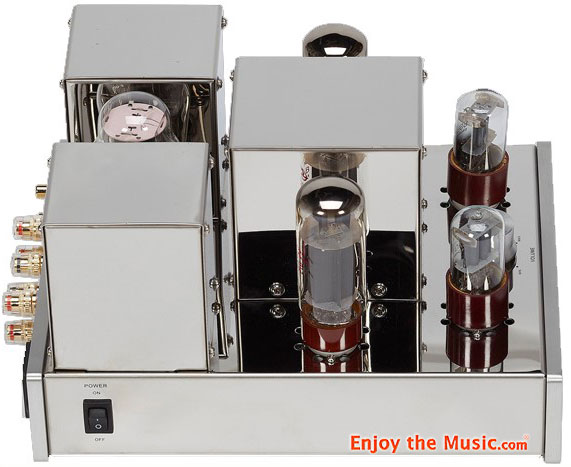
Admit
I'll be the first to admit that high-end audio can be an expensive proposition. But it doesn't have to be. A case in point is the Coincident Dynamo SE34 MK III integrated amplifier. In the past, I've used many different amplifiers with the same system I used to audition the Dynamo MK III, both tube and solid-state, both high and low-powered. If I was forced to spend the rest of my days with this integrated amplifier, powering the speakers I used for this review, I'd have no problem with this. If one has or can somehow acquire speakers that can work well with a low-powered amplifier, I highly recommend the Coincident Technology Dynamo SE34 MK III. And if one is already using the MKII version of this amplifier, I highly recommend upgrading to the MKIII version.
Specifications
Type: Vacuum stereo integrated amplifier
Inputs: Two stereo RCA, front panel selectable
Output Power: 8 Watts per channel, two channels
Tube Compliment: Two 6H9C (6SL7) input/driver tube, two EL34 output tube, and one 5AR4 soft-start rectifier
Output impedance: 8 Ohms
Frequency Response: 20 Hz to 20kHz
Sensitivity: 300 mV full output
Input impedance: 100 kOhms
Headphone Amplifier Output Impedance: 100 Ohms
S/N Ratio: 92dB
Weight: 30 lbs
Dimensions: 9.5" x 12.5" x 7" (WxDxH)
Price: $1799
Company Information
Coincident Speaker Technology
391 Woodland Acres Crescent
Maple, Ontario
Canada L6A1G2
Voice: (647) 221-1834
E-mail: iblume@coincidentspeaker.com
Website: www.CoincidentSpeaker.com




![]()




![]()